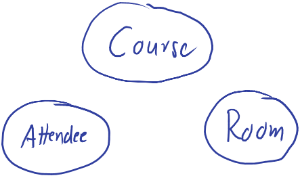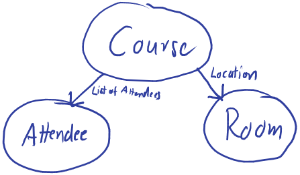A short introduction on how to create an information model for you documentation / communication requirements.
Simple Example with Course, Room, and Attendee
- Identify entities of your domain
- Course
- Room
- Attendee
- list document properties for each entity
- Course: Date
- Attendee <none>
- Room: Size, Equipment
- list document sections for each entity
- Course: <none> since Description, References, and Resources are defaults
- Attendee: List of Courses
- Room
Additional properties for Course: List of Attendees, Location






